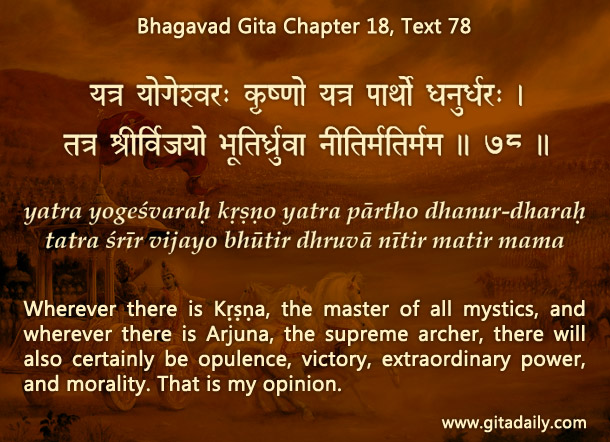The quintessential image of surrender is the chaste Draupadi, raising her hands in utter helplessness while being disrobed and calling out to Krishna for protection. But surrender doesn’t manifest only as helpless dependence on Krishna – it can also manifest as resourceful readiness to serve him.
Krishna concludes his message in the Bhagavad-gita (18.66) by asking Arjuna to surrender. And Arjuna surrenders (18.73), declaring that he will do Krishna’s will. Yet the Gita concludes (18.78) with an intriguing image of Arjuna – not with his hands raised in surrender, but with his bow raised in readiness to fight.
Did Arjuna not surrender? He certainly did, but the way he surrendered differed dramatically from the way Draupadi surrendered. The essence of surrender is the inner mood of harmonizing one’s will with the will of the Lord. How that inner harmonization expresses itself externally will vary depending on time-place-circumstance.
Life will sometimes leave us powerless, as was Draupadi in the Kuru assembly. At such times, we need to follow her example and surrender to Krishna in utter helplessness and dependence. And at most other times in life, we will need to act intelligently and energetically to do our service, to do justice to our God-given talents and to make the contributions that we are meant to make. At such times, we need to surrender in the mood of Arjuna – with the metaphorical bow of our determination to serve held aloft, ready to use all our abilities for serving Krishna resourcefully.
Surrender may express itself as utter helplessness, as resourceful readiness or as something in between – whatever enables us to best serve Krishna. With this inclusive, dynamic understanding of surrender, we can see it not just as an occasional state of spiritual trance, but also as a perennial state of practical, spiritualized consciousness.
To know more about this verse, please click on the image
Explanation of article:
Podcast:


Surrender to Allmighty brings eternal pleasure